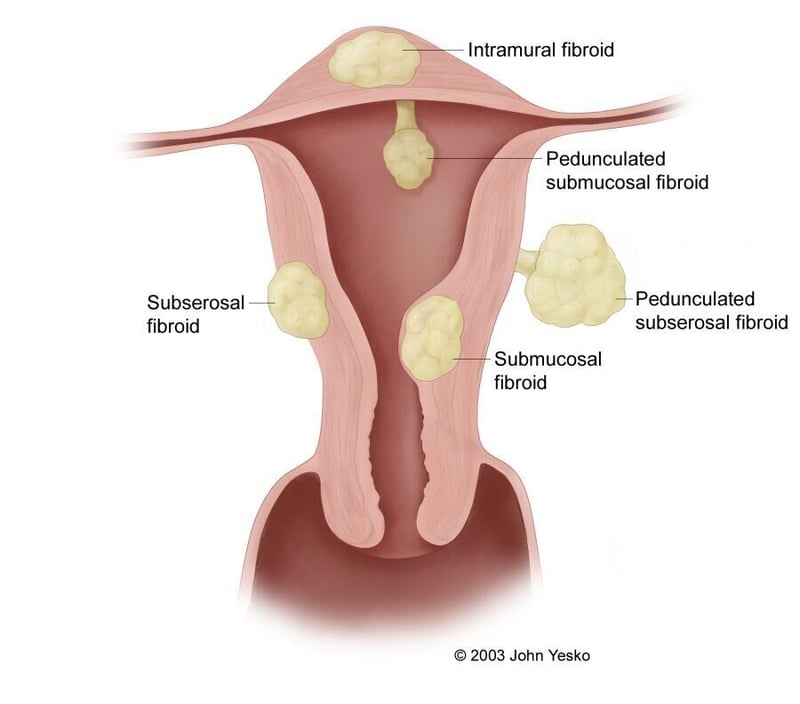The Breakthrough Uterine Fibroid Treatment
Written by: Fibroid Save to Instapaper
Fibroid Embolisation is a minimally invasive procedure which treats uterine fibroids through the femoral artery in the groin or the radial artery in the wrist. This innovative treatment is being established throughout South Africa, Botswana and Namibia by the Fibroid Care initiative under the guidance of Dr Andrew Lawson.
Uterine Fibroids are abnormal masses of muscle and which occur in the uterus. They affect the majority of women aged 35-50 and depending on their size and severity, can cause excessive menstrual bleeding in addition to constant pain in the pelvis and lower back.
Fibroid Embolisation is a step away from traditional surgical procedures and provides an alternative means of controlling symptomatic uterine fibroids through an endovascular procedure, conducted by an interventional radiologist.
When carrying out Fibroid Embolisation, doctors are selective about their patients as a small percentage of people are not suited to the method. These include people for whom the radial artery is a sole supplier of blood to the hand. A quick, pain-free test is carried out which includes evaluation of the artery through compression whilst measuring the flow of blood to the hand.
Light sedation is administered to patients undergoing the procedure, who remain awake but drowsy. A small incision is made in the skin through which tiny, flexible tubes (catheters) are inserted in either the femoral artery, located in the groin, or the radial artery which is located in the wrist. Through this access point and under x-ray guidance, the catheters locate the arteries supplying the fibroid with nutrition. A blockage is then created through the insertion of inert cells which obstruct blood supply to the fibroid. The fibroid will decrease in size over time until it disappears entirely.
The radial artery is located close to the skin’s surface and allows for an easier and more comfortable experience for patients, particularly when the catheter enters the body. Recovery begins almost immediately after the conclusion of the procedure and the period of recovery is minimal with most patients restored to full health within days.
Fibroid Embolisation is still not a familiar route for many Gynaecologists in Africa who have not been fully exposed to the treatment as yet. Traditional treatments included a hysterectomy which would affect a women’s ability to have children, or a more invasive myomectomy.
A little more about Dr Andrew Lawson:
Dr Andrew Lawson is a Specialist Diagnostic & Interventional Radiologist.Dr Lawson received his MbChb from the University of the Witwatersrand and went on to study further, receiving his accreditation in Radiology at Groote Schuur Hospital in Cape Town.
He received expert training in Fibroid Embolisation while at the Royal Surrey Hospital in England. He then spent some time in Australia, gaining experience in diagnostic magnetic resonance imaging (MRI).He is currently the coordinator of the Fibroid Care initiative and practices Fibroid Embolisation across South Africa as well as parts of Sub-Saharan Africa.
For more information:http://www.fibroidcare.co.zaEmail: This email address is being protected from spambots. You need JavaScript enabled to view it.Tel: +27 (0)79 810 9423
Get new press articles by email
Latest from
- Innovative & effective radiology treatment for Uterine Fibroids now available in South Africa
- Innovative keyhole procedure to treat Uterine Fibroids through the radial artery located in the wrist
- Avoid a Hysterectomy with Fibroid Embolisation
- A micro-invasive method for treating symptomatic Uterine Fibroids.
The Pulse Latest Articles
- Education Is The Frontline Of Inequality, Business Must Show Up (December 11, 2025)
- When The Purple Profile Pictures Fade, The Real Work Begins (December 11, 2025)
- Dear Santa, Please Skip The Socks This Year (December 10, 2025)
- Brandtech+ Has 100 Global Creative Roles For South African Talent (December 9, 2025)
- The Woman Behind Bertie: Michelle’s Journey To Cape Town’s Beloved Mobile Café (December 9, 2025)
